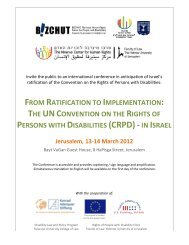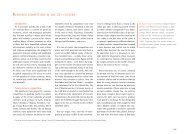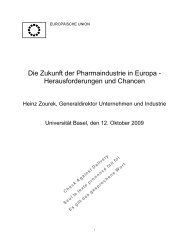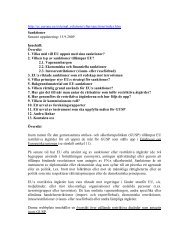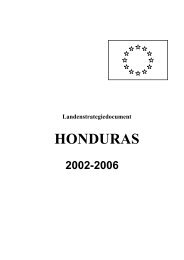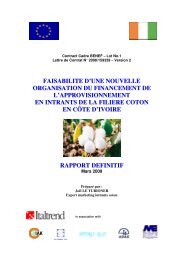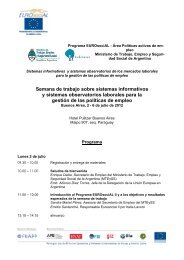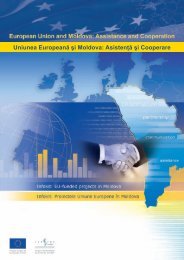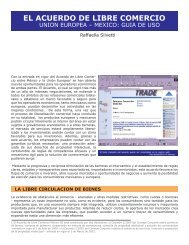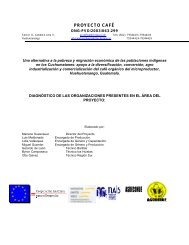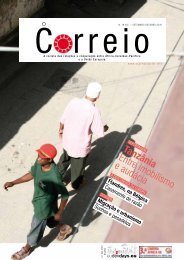Regional Reports - the European External Action Service
Regional Reports - the European External Action Service
Regional Reports - the European External Action Service
Create successful ePaper yourself
Turn your PDF publications into a flip-book with our unique Google optimized e-Paper software.
ensure <strong>the</strong> access to <strong>the</strong>se services while o<strong>the</strong>rs are engaged in <strong>the</strong> provision of education<br />
and health services.<br />
• In addition to local NGOs, <strong>the</strong>re are also few number of civil society organizations of<br />
various types which are established in urban areas like Jigiga and o<strong>the</strong>r major towns of<br />
<strong>the</strong> region. While women and youth associations are <strong>the</strong> major ones, anti HIV/AIDS<br />
clubs and forums, pastoralist forums, Iddirs, savings and credit associations are also<br />
important civil society organizations. But <strong>the</strong>ir activities are limited since <strong>the</strong>y were<br />
established recently.<br />
• In SNRS, <strong>the</strong> prevalence of HIV/AIDS is currently much higher in urban areas like Jigiga<br />
as compared to <strong>the</strong> rural areas of <strong>the</strong> region. More over, <strong>the</strong> prevalence rate is higher<br />
among <strong>the</strong> young and women living in urban areas. Therefore, NSA like youth and<br />
women groups are more active in urban areas while such organized groups are less<br />
visible in rural areas where <strong>the</strong> prevalence rate is low. Never<strong>the</strong>less, CBO especially<br />
Iddirs are not merged like in o<strong>the</strong>r major towns to engage in non-traditional activities like<br />
<strong>the</strong> provision of care and support for PLWHA and/or facilitate donor support for local<br />
social development.<br />
• The total number of NGOs operating in SNRS is very small in relation to <strong>the</strong> population<br />
and severity of social and economic problems prevailing in this region. This is<br />
particularly true for local NGOs which do not also have <strong>the</strong> capacity and resources<br />
required to engage in development and service provision activities that <strong>the</strong>y perceive to<br />
do. Only a couple of <strong>the</strong>se NGOs have been operational for a little more than ten years<br />
while many of <strong>the</strong>m were formed very recently and hence are at low level of maturity.<br />
• Local NGOs in Somali region are in most cases organized alone clan lines and <strong>the</strong>ir<br />
activities are also confined to <strong>the</strong> areas inhabited by <strong>the</strong> clans which <strong>the</strong>y want to serve.<br />
Moreover, occasional social conflict on resources (pasture land and grazing area, water<br />
sources, etc) among clans and also <strong>the</strong> narrowly focused local NGO operation restricts<br />
cooperation and collaboration among local NGOs. Thus, social capital mobilization is<br />
weak due to <strong>the</strong> limited number of NSA and because of clan based organisation that<br />
weakens intra-clan operation, networking, collaboration and collective actions.<br />
• While activities that address basic problems of pastoral and agro-pastoral livelihood are<br />
<strong>the</strong> major sector of engagement for NGOs including INGO operating in <strong>the</strong> region,<br />
emergency programs aimed at <strong>the</strong> mitigation of disasters are also important areas of<br />
engagement. Targeting disaster and <strong>the</strong> vulnerabilities associated with famine and food<br />
shortages are <strong>the</strong> main <strong>the</strong>matic area for a large number of <strong>the</strong> international NGOs that<br />
started operating in <strong>the</strong> region over a decade ago.<br />
• Resource limitation and access to project fund is a crucial problem for indigenous NGOs<br />
especially those which were formed recently and hence, <strong>the</strong>se NGOs often compete for<br />
similar resources and funding sources. The access to funding sources often depends on<br />
<strong>the</strong> strength of NGO management to network and link with large INGO and also sector<br />
offices at regional levels. Some of <strong>the</strong>se NGOs that have strong linkage with <strong>the</strong>se<br />
funding sources have started to enter into subcontract arrangement for <strong>the</strong><br />
implementation of development and/or humanitarian activities. Such arrangement is in<br />
most cases for <strong>the</strong> funds provided by multilateral agencies like UNICEF which do not<br />
directly implement projects for <strong>the</strong>mselves but would channel funds through regional<br />
sector bureaus into <strong>the</strong> local NGOs with whom sector offices like education, health and<br />
BoLSA enter project implementation agreement.<br />
16




